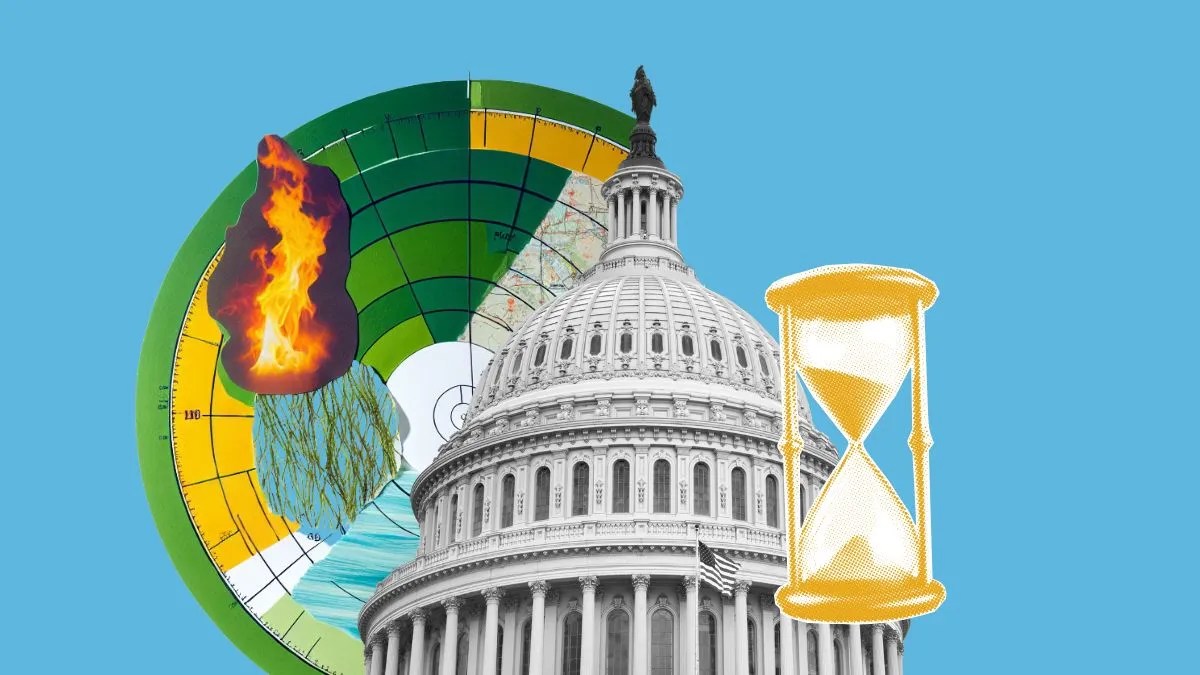NFIP expiration looms as shutdown, disaster seasons collide

Sarah Wolak: How do you see states and businesses reacting to the possibility of the NFIP expiring?
Jordan Haedtler: One really unfortunate aspect of our government is that government shutdown negotiations and debt ceiling negotiations that periodically cause the shutdown threats almost always correspond with the end of the fiscal year. And that September 30 deadline that has plagued congressional and White House negotiators for over a decade now also correlates with the moment when disaster season is becoming even more costly.
So we’ve had numerous instances in recent years where the uncertainty for the National Flood Insurance Program and the famous Disaster Relief Fund, which usually needs to be replenished as part of the appropriations process, has come to a head at the same moment when both hurricane season and wildfire season are coming to a peak, and it affected Massachusetts in the fall of 2023 when FEMA’s Disaster Relief Fund was underfunded and areas that experienced extreme flooding that fall wasn’t able to access federal relief quickly, and the Maui wildfires also happened in the midst of government shutdown negotiations, which delayed federal aid after that disaster.
And so states are even, before Trump began dismantling FEMA and NOAA, states were really struggling with this dynamic of our broken disaster relief system, and were beginning to realize that they needed to take steps on their own to bolster their climate resilience, because the federal government has not been fully equipped to respond appropriately to climate disasters for years now, and it’s now being made worse by the Trump administration abandoning its commitment to disaster relief across a score of agencies and programs.
SW: That’s a lot to unpack, given the breadth of what this is affecting. Bringing this issue to HousingWire’s audience, what would the immediate impacts be for homeowners if [NFIP] ends up lapsing in four days?
JH: I would say a shutdown looks likely, although even when there were two shutdowns during Trump’s first term, those weren’t the examples when the Flood Insurance Program experienced a lapse, because Congress usually aligns the Flood Insurance Program alignment with the deadline for the continuing resolution. But in several instances, including during the shutdowns that took place in 2018 and 2019 during Trump’s first term, they actually extended the Flood Insurance Program deadline to not correspond with the continuing resolution (CR), and they could do that again so that there’s not a lapse, even if the government shuts down.
I don’t have any kind of insight into whether they would do that, even if they don’t avoid a shutdown, but that’s the one thing that they could do to avoid a lapse. But, it has lapsed before. And there’s also been shutdowns before, of course. And this would be an example of both hitting at the same time, which would be quite extreme.
And it should also be said that even though there have been lapses before and there have been shutdowns before, there has never been that situation at this September 30 moment. Also, there are some pretty extreme storms materializing in the Atlantic right now, and we don’t even know what else could happen in October on the wildfire front. So this is a very dangerous moment to have both of those things coinciding.
SW: So if this were to happen, does that mean it expires until the next budget is approved?
JH: Presumably that’s what it would mean, since Congress does have the power to make the short-term extension not correlate with the CR like it does normally. Looking at this Congressional Research Service report that outlines the 33 short-term reauthorizations that have taken place since fiscal year 2017, there have been three very brief lapses since that period, but they have never been more than 48 hours. But for the most part, they correspond with when the CR was extended, and so then the term of the authorization was just extended to the next CR deadline.
But I was confused as I looked through this this morning because I had assumed that there had actually been lapses that were as long as some of the lengthier shutdowns from Trump’s first term, but those aren’t listed here. And then, when I looked into it, the reason why is that there were a few exceptions to correlating the CR with the reauthorization extension, and those happened to be when the government shutdowns occurred during Trump’s first term. So that’s why I’m saying that they could, in the next few days, do that again.
SW: Since you work in policy at the state level, could you speak to how insurers are preparing for the lapse?
JH: I think that some of the lengthier and more costly lapses actually occurred in the 2010s. The longest was in the spring of 2010 when the program lapsed for nearly a month, and during that time, there were over 1,400 home sale closings that were canceled or delayed every day, and about 40,000 sales per month. So the real estate implications in some of the special flood hazard areas are pretty significant.
It can affect both the residential and commercial sides. That seems to be the most significant consequence when the Flood Insurance Program lapses is that real estate is essentially frozen in certain flood zones that are required to obtain flood Insurance…there are aspects of the Flood Insurance Program that continue going, like the flood mitigation grant program, but those are already experiencing a lot of uncertainty because of the Trump administration’s moves to cut and undermine FEMA in numerous ways, and so those programs that are the less affected components of the Flood Insurance Program have already been under a lot of stress throughout this year.
So there has to be numerous guidances that are put out by the banking regulatory agencies to help lenders and mortgage borrowers deal with the consequences of even a brief lapse.
SW: We’re four days out from its expiration. What is your best guess of what’s going to happen?
JH: I think there’s always the possibility that they could extend the program out of recognition that there’s no sense in causing this lapse, in addition to all of the costly consequences of a federal shutdown. But I don’t know for sure whether that’s going to happen.
The consequences of a government shutdown are going to be quite profound. Among those consequences is not only the effect on the real estate market in special flood hazard areas, but also the possibility that we could see a significant climate disaster in October. There will be delays in flood insurance contracts being honored, delays in relief, and much higher costs to the federal government once the shutdown negotiations are resolved.
The program not having the borrowing authority to meet its obligations can always be resolved retroactively, but those delays have consequences and raise the total cost once the government is operating again. Unfortunately, there’s no guarantee this will be a quickly resolved shutdown. The longest federal shutdown in history happened during Trump’s first term, so we have some experience with lengthy shutdowns and this particular president. I don’t think we can assume this would just be a week or so.
SW: What does this look like at the state level?
JH: States have been forced to take matters into their own hands. We saw both Hawaii and Massachusetts begin to bolster their climate resilience. New Mexico passed a bill called the Wildfire Prepared Act in its 2025 session. Maine’s major legislative initiative this year was a bill called LD 1, which, among other things, provided state resources for flood mapping.
We’re starting to see states take on functions related to disaster relief, flood mapping, flood risks and climate-resilient infrastructure that they historically relied on the federal government to carry out. That shift is not just a response to the Trump administration requiring states to shoulder more of the disaster relief burden. It’s also a response to a longer-term message from Congress over more than a decade — that the federal government cannot be relied on to provide some of the most important responsibilities in helping communities deal with climate disasters, and that states will have to take matters into their own hands.









